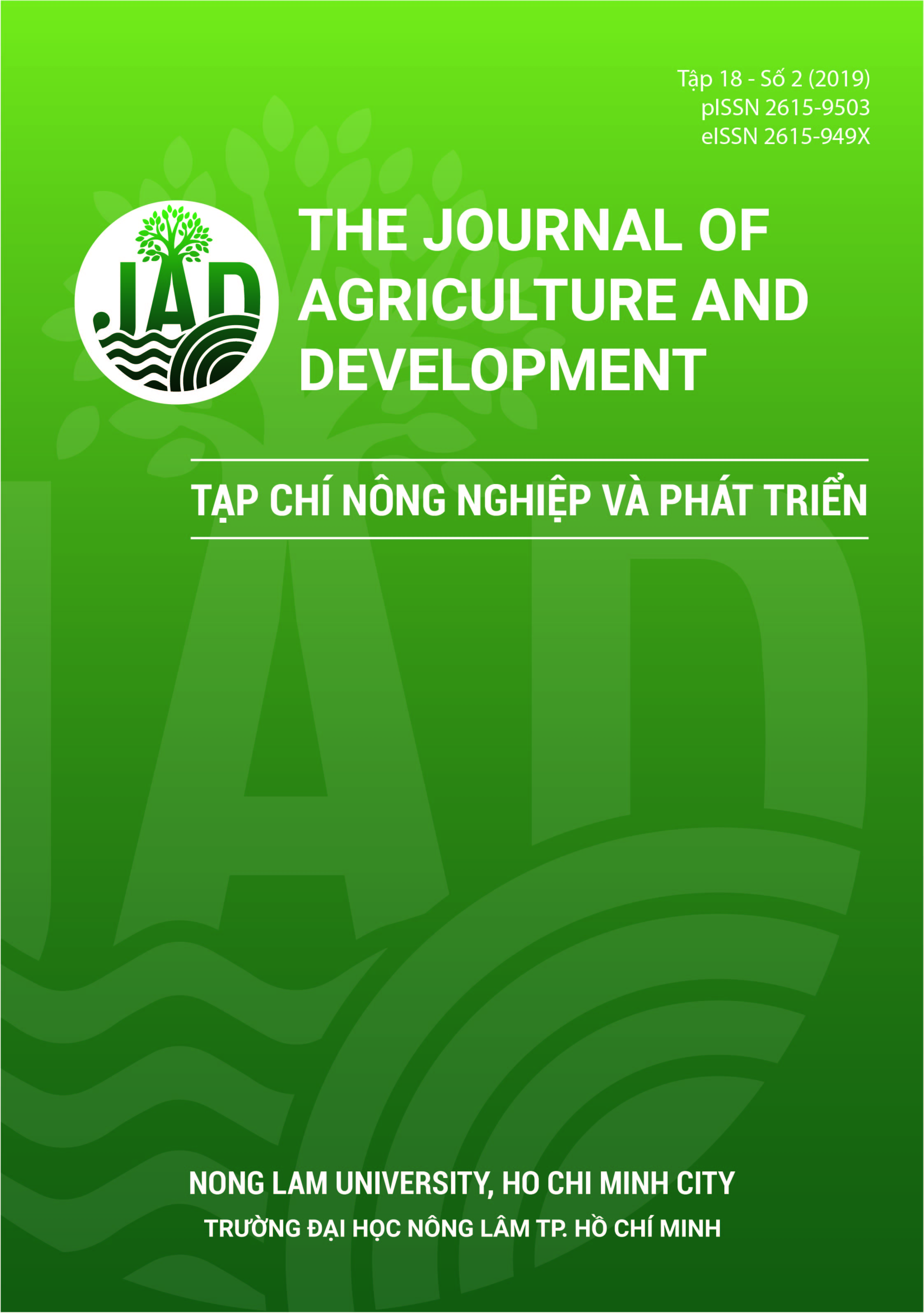Nhận dạng gene “fgr” quy định mùi thơm và đánh giá sơ bộ các đặc điểm nông học giống nếp dứa (Oryza sativa L.)
Main Article Content
Tóm tắt
Cây lúa (Oryza sativa L.) là cây lương thực quan trọng nhất ở Việt Nam, đặc biệt là ở Đồng bằng sông Cửu Long. Chọn lựa giống lúa có năng suất, chất lượng cao là cần thiết cho việc sản xuất lúa gạo ở Việt Nam. Mục tiêu của nghiên cứu này là ứng dụng kỹ thuật sinh học phân tử để nhận dạng gen quy định mùi thơm và đánh giá sơ bộ các tính trạng nông học của giống nếp dứa. Kết quả nghiên cứu cho thấy giống nếp dứa có mang gen quy định mùi thơm. Đoạn khuếch đại gene quy định mùi thơm thể hiện ở kích thước khoảng 255 bp với cặp primer ESP – IFAP. Tương tự, kết quả đánh giá các đặc tính nông học cho thấy giống nếp dứa có nhiều đặc tính mong muốn như chiều cao cây trung bình khoảng 108 cm, chiều dài bông khoảng 25,6 cm, số hạt trên bông là 135 hạt/bông, trọng lượng 100 hạt là 2,07 g, hạt gạo thơm, có độ trở hồ cấp 2, độ bền thể gel cao khoảng 93 mm, thuộc loại rất mềm. Kết quả này là những thông tin hữu ích góp phần vào việc cải tiến và cung cấp thêm giống nếp thơm trong sản xuất lúa.
Article Details
Tài liệu tham khảo
Bradbury, L. M. T., Fitzgerald, T. L., Henry, R. J., Jin, Q., & Waters, D. L. E. (2005). The gene for fragrance in rice. Plant Biotechnology Journal 3(3), 363-370. https://doi.org/10.1111/j.1467-7652.2005.00131.x
Bui, B. C. (2002). Application of biotechnology techniques for seed selection, molecular markers in selecting varieties resistant to brown planthopper, anobium borer, blast and leaf blight disease. Final Research Report (71). Ho Chi Minh City, Vietnam: Ho Chi Minh City Department of Science and Technology.
Chen, Y. D., Wan, B. H., & Zhang, X. (2005). Plant ideotype at heading for super high-yielding rice in doublecropping system in South China. Rice Science 12(2), 92-100.
Hirose, T., Ohdan, T., Nakamura, Y., & Terao, T. (2006). Expression profiling of genes related to starch synthesis in rice leaf sheaths during the heading period. Physiologia Plantarum 128(3), 425-435. https://doi.org/10.1111/j.1399-3054.2006.00758.x
IRRI (International Rice Research Institute). (1996). Standard evaluation system for rice testing program (4th ed.). Manila, Philippines: IRRI.
IRRI (International Rice Research Institute). (1988). Standard evaluation system for rice testing program (3rd ed.). Manila, Philippines: IRRI.
Jennings, P. R., Coffman, W. R., & Kauffman, H. E. (1979). Rice improvement. Manila, Philippines: International Rice Research Institute.
Nguyen, D. N. (2008). Rice-lecture notes. Can Tho, Vietnam: Can Tho University.
Nguyen, L. T., Nguyen, T. T., Trinh, L. T., & Bui, B. C. (2004). Application of molecular markers in rice breeding to create improved quality rice varieties with fragrance and intermediate amylose content. Final Research Report (2-44). Ha Noi, Vietnam: Ministry of Agriculture and Rural Development.
Nguyen, T. H., Nguyen, G. D., Nguyen, H. T., & Ha, V. C. (1997). Staple-foods crops-lecture notes volume I. Ha Noi, Vietnam: Agricultural Publishing House.
Yoshida, S. (1981). Fundamentals of rice crop science. Manila, Philippines: International Rice Research Institute.








